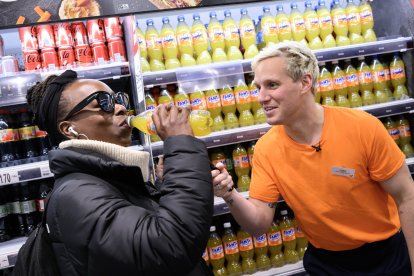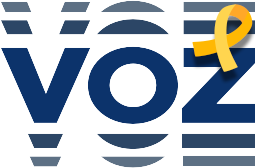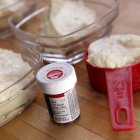These are the most popular products that use the synthetic dyes identified by the FDA
The US announced a program that prioritizes transparency in labeling and reducing risks associated with habitual consumption of substances with no nutritional value.

Fanta Orange Zero, at its launch
This week the Food and Drug Administration (FDA) announced that several artificial colorings used in sweet and savory 'snacks,' as well as beverages, cosmetics and toiletries, will be banned by 2027.
The Department of Health and Human Services also formally requested food companies to remove at least six of these petroleum-based synthetic dyes from the market.
The initiative was announced by Secretary Robert F. Kennedy Jr., claiming that such actions are intended to reduce the population's exposure to these additives, many of which are present in products aimed primarily at children and which also have no nutritional value.
What are the best known products that use these colorants?
Artificial colorings are used in a large number of foods, especially those popular with children in a range from cereals to candy to soft drinks, among others.
WK Kellogg Co's Froot Loops and General Mills Inc.'s Lucky Charms are among the most well-known examples. Artificial dyes are also found in sugary drinks like Coca-Cola Co.'s Fanta and PepsiCo Inc.'s Mountain Dew and Gatorade. Surprisingly, dyes even appear in products like pickles, smoked salmon, and flavored applesauce—though they often aren't visible to the naked eye.
They are also in other foods and everyday products, such as mouthwash, mustard and ketchup.
A radical and healthy change in food policy
Red 3, already banned in cosmetics since 1990 and in food since January 2025 due to its link to cancer in laboratory rats, marks the beginning of this crusade against synthetic additives.
Red No. 40, also known as Allura Red AC
One of the most widespread colorants is Red No. 40, also known as Allura Red AC or E 129 in Europe, one that for months now has been in the crosshairs of health bodies.
The substance appears in a huge variety of processed foods. In beverages, it is found in products such as Gatorade Fruit Punch, Fanta Soda, various brands of strawberry-flavored milk and pink lemonade mixes.
Among cereals, it appears in Kellogg's Froot Loops and General Mills' Lucky Charms. It joins frozen desserts, such as Turkey Hill Black Raspberry ice cream, Breyers M&M's Minis Caramel Fudge Light Ice Cream, Blue Bell Birthday Cake and also Blue Bunny's strawberry-flavored products.
Of particular note is its use in ketchup and similar sauces.
In addition to its use in food, Red 40 is incorporated in pediatric drugs and cosmetics, expanding its presence beyond the supermarket.
Yellow No. 5 and No. 6: the most common in snacks and dressings
Yellow No. 5 is another dye under review by the U.S. Department of Health. In addition to pancakes, corn tortilla chips, potato chips, popcorn, and cheese puffs, it appears in mustard.
This additive is found in highly consumed products such as Skittles, M&Ms, cereals such as Lucky Charms, some cake mixes, PepsiCo's Mountain Dew drink, as well as industrial dressings and pickles.
Yellow No. 6, meanwhile, is also found in cereals such as Trix and Froot Loops, in beverages such as Fanta, in frozen products (Otter Pops) and in other foods aimed at a children's audience.
Blue No. 1 and Blue No. 2: candies, energizers and pharmaceuticals in the spotlight
Blue No. 1 and Blue No. 2 colorants are essential in the manufacture of multicolored candies that abound in the markets.
Blue No. 1 is in candies such as M&Ms, Skittles, Airheads and Jolly Ranchers. It also appears in Pillsbury's Funfetti Aqua Blue frosting, yogurts like YoPlait's Blueberry Patch, flavored gelatins, cocktail syrups like Monin and Torani's blue curaçao, and energy drinks like Red Bull Blue.
One of the most striking features is that it is part of the formulation of drugs such as Prozac.
Blue No. 2, also labeled Indigotine or Indigo Carmine, is used more in icing decorations, processed foods, and also in non-edible products such as soaps, shampoos and some pet foods.
Green No. 3: personal hygiene products are added
The last of the dyes included in the FDA's planned phase-out plan is Green No. 3, which is present in both foods, and oral care products.
Brands such as Colgate and Listerine incorporate it in their mouthwashes, while it also appears in some mentholated candies.
Their presence in everyday products calls into question the difficulty of limiting the use of these colorants without a broad and coordinated substitution policy.
The review of these six colorants marks a milestone in U.S. food policy. While not an immediate ban, the call for their phase-out marks a clear direction toward substitution with naturally occurring compounds.















